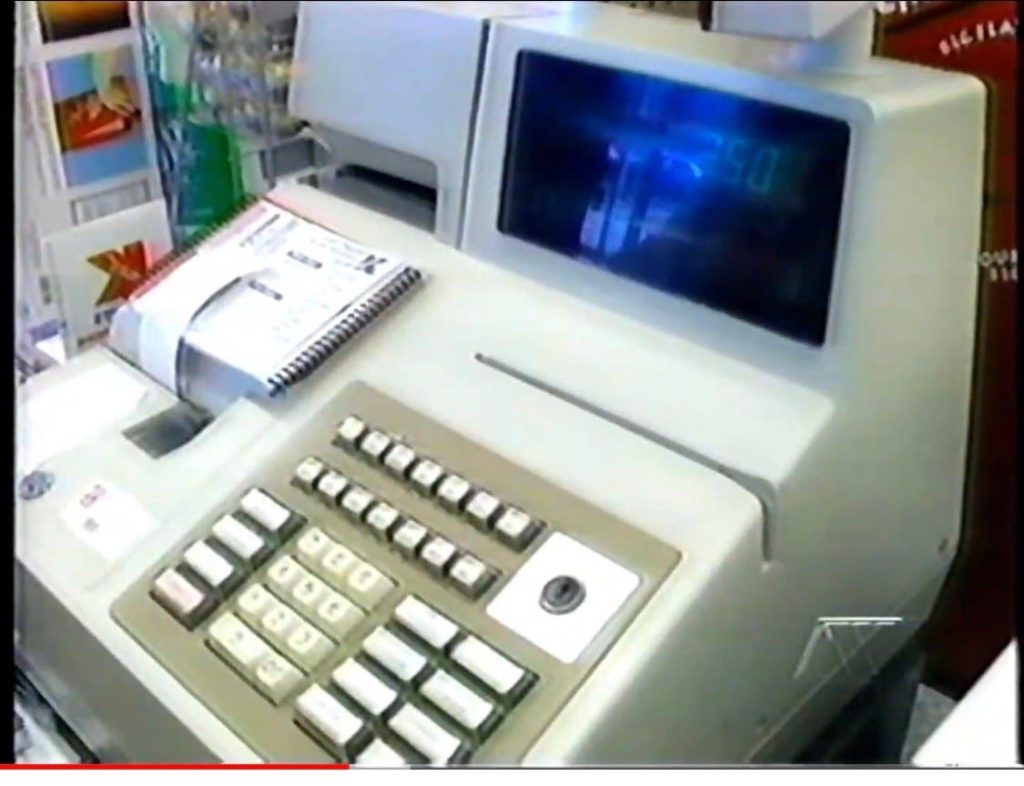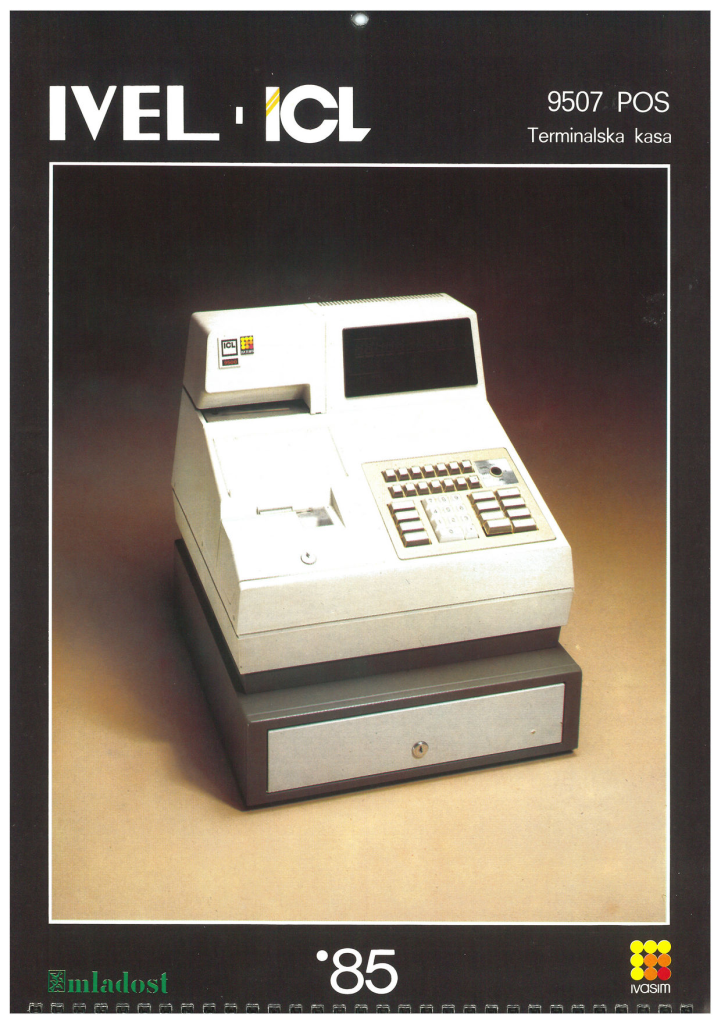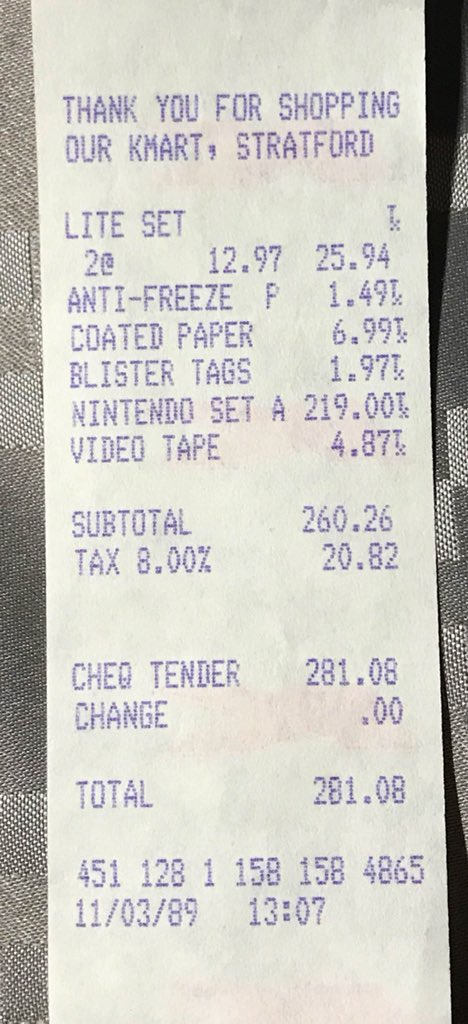
In 1965, the Singer Sewing Machine Company moved into the world of computers by purchasing the Friden Calculating Machine Company, manufacturers of calculators and other computing equipment. With the purchase of Friden, Inc., Singer Business Machines was born. The Singer System Ten, with its focus on point of sale computing equipment, was released in 1970s.
Kmart Canada took a different path than its U.S. counterpart when it came to equipment used at the checkouts. While Kmart U.S. was generally using NCR Class 5 mechanical cash registers or early electronic cash registers from NCR or Data Terminal Systems, some locations in Canada began using the Singer System Ten and Singer-Friden 908 point of sale terminals. Singer left the computing industry in 1976, selling the SBM division to International Computers Limited. ICL continue developing the Singer line, evolving the System Ten to the System 25. However, along the way, Kmart Canada moved their back-end controllers to microprocessors called the System CD 100, supplied by CyberData of Monterey, California.1
In the early to mid 1980s (still determining the date), the Singer terminals at Kmart Canada stores were undoubtedly coming to their end of useful life. While the machines could be adapted to work with just about any backend system, as these machines were designed to perform mathematical computations at the register, relying on back-end processing for inventory and account lookup information, with SBM equipment being integrated into ICL’s existing systems before the merger, Kmart Canada began looking for new registers.
It appears that Kmart Canada decided to go with the ICL 9500 series of registers.

The ICL 9500 series of registers were somewhat modular in design. Field observations indicate customer pole displays were added to the registers well after the initial installation in the mid 1980s. The keyboard arrangement is also interesting to me, in that the Enter key isn’t a double height or double wide key, but rather just a raised key to the right of the bottom row of the number pad. The printers appear to be Epson printers using 44mm receipt tape.
Like the Singer predecessors, the ICL 9500s could be adapted to work with a variety of back-end systems. Back in this era, point of sale systems tended to store and forward data to other mainframe systems; there are plenty of examples where NCR cash registers in the early 1980s were supported by IBM Series/1 installations. While manufacturers preferred they used their “complete package”, there were other options.
In the latter half of the 1980s, the CIO of Kmart in the United States was focused on solving point of sale issues in the American stores. After a couple of failed attempts through Kmart U.S.’s work with IBM and NCR, the CIO and team worked with a variety of vendors for a cohesive solution. Kmart in the states moved to point of sale and inventory software by Post Services International, or PSI, of North Carolina. While Kmart stores in states could have NCR, IBM, or Fujitsu registers at the checkouts, they all ran on the same software. It appears Kmart Canada was a little ahead of their American counterparts in the front end technology department, and worked with PSI to get the same software running on their ICL 9500 series cash registers.

There are a couple of clues on the receipt pictured above that it’s a variant of the software running on the registers in the American Kmart stores of the time, primarily the “158 158” in the receipt data footer.
Like Kmart in the states, Kmart Canada was using satellite communications to connect their stores, warehouses, and offices together. The picture at the top of this entry is grabbed from a video of a CBC News Report about the satellite outage that caused computer outages throughout the chain. Unfortunately that video is no longer available.
Kmart Canada ran with the ICL 9500 series cash registers until the sale of the chain to Zellers in 1998. It was around that same time Kmart and other chains started planning for Y2K. Kmart would eventually move away from PSI to a modified version of IBM’s Supermarket Application (which was used at their Super Kmart stores). Zellers would introduce their mix of NCR and IBM systems to the stores purchased from Kmart Canada.
- 1 Computerworld, March 1978
